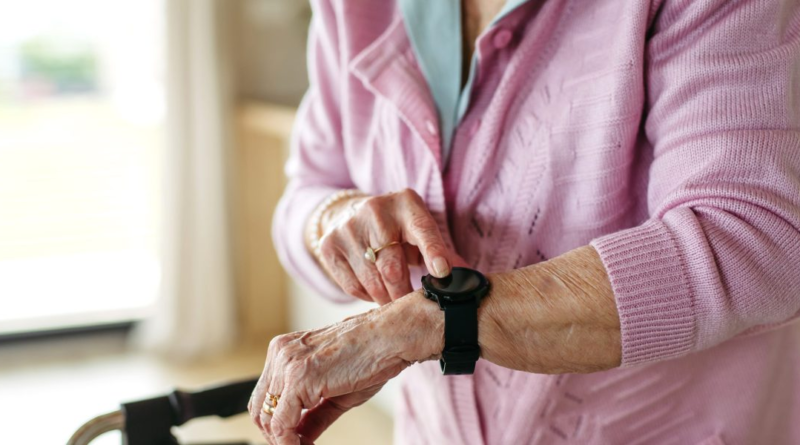Does Medicare cover medical alert systems? Here’s what experts want you to know about your options
According to the National Poll on Healthy Aging, which surveyed adults from ages 50 to 80, 88% responded that it was important to remain in their homes as long as possible. For older Americans to age in place well, technology can be useful, especially medical alert systems.
“These devices allow those who have fallen or have an emergency to contact someone for assistance,” says Jen Teague, Director for Health Coverage and Benefits at the National Council on Aging. “Ultimately, they help an individual maintain independence.”
Medical alert devices have come a long way since the 1980s Lifecall ads that featured an older woman on the ground saying, “I’ve fallen and I can’t get up.” Today’s medical alert options range from in-home and on-the-go systems to watches and other wearables.
How do medical alert devices work?
Typical at-home medical alert systems have a base unit in the home that connects wirelessly to wall-mounted sensors or wearable devices. On-the-go, or mobile systems, include a rechargeable battery and charger.
Both systems typically offer wearable accessories, such as a necklace, bracelet, or watch, that include a help button. When the button is pushed (or in some models, when a fall is detected), an alarm is activated and the monitoring center, or emergency contacts and responders are notified.
Average monthly costs range from $20–$45, not including the cost of equipment and other programming fees.
Other devices that can be helpful in medical emergencies
Apple Watch
Unlike medical alert watches, the Apple Watch ($249-$799) does not connect to a monitoring center. However, it has safety features—such as the ability to contact emergency services, detect a fall, and show medical information in case of emergency.
Voice assistants
These devices placed around your home can remind you about appointments and keep you up-to-date on the latest news. While not medical alert devices, they may help in a medical emergency.
Both Google Nest’s and Amazon Echo’s line of devices have the ability to call a saved contact for help. You must set this up through their apps. Unfortunately, the systems do not allow calls to 911.
Alexa Emergency Assist is also available through your Amazon Echo device as an add-on. If you need help, you can say “Alexa, call for help.“ This connects you with a 24/7 Urgent Response agent who can request emergency services and provide critical information from your profile to first responders. In addition, your designated emergency contacts are alerted whenever a call starts and ends.
Prices start around $40 for devices. Subscription and membership fees are extra.
Does Medicare pay for medical alert devices?
“Traditional Medicare and Medigap do not cover medical alert systems, smartwatches, or voice assistants,” says Kathleen Holt, Associate Director and Attorney at the Center for Medicare Advocacy.
Some Medicare Advantage programs may cover medical alert devices, says Holt.
In addition, some Medicaid programs may cover what they call Personal Emergency Response Services (PERS) devices. You can see a list by state, here.
“Medical alert devices do not meet the definition of covered medical devices, or durable medical equipment, under Medicare,” says Holt.
Medicare Part B only covers medically necessary durable medical equipment if your health care provider prescribes it for use in your home. Medically necessary is defined as “health care services or supplies needed to diagnose or treat an illness, injury, condition, disease, or its symptoms and that meet accepted standards of medicine.”
Typical durable medical equipment covered under Medicare includes canes, walkers, and oxygen equipment.
“The main purpose of Medicare is treating problems rather than preventing something from happening,” Holt says. “As these medical devices are mainly preventive, they aren’t covered.”
Other ways to pay for medical alert devices
- Veterans may qualify for a free medical alert system.
- “Medical device companies sometimes offer discounts on the equipment,” says Teague.
- As with many other medical expenses, if you have funds in a health savings account (HSA), you can use them to pay for a medical alert system.
- You can also contact your local Area Agency on Aging, to see if there are community-based programs that can help cover these expenses.
- Finally, consider looking up what benefits you qualify for through the National Council on Aging’s localized benefits database, or call the helpline at 1-800-794-6559. They may connect you benefits programs that can help pay for a medical device.




